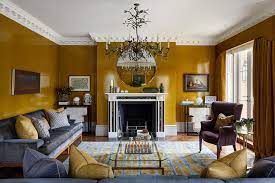The Core of Artistic Living:
Creative Expression: Artistic living involves expressing oneself authentically through various mediums, whether it's visual arts, music, literature, dance, or any form of creative endeavor.
Imagination and Innovation: Nurturing an imaginative mind and fostering an environment that encourages innovation fuels the artistic spirit.
Emotional Depth: Artistic living delves into the depths of emotions, using them as fuel to create impactful and meaningful art that resonates with the soul.

Daily Practices and Rituals:
Creating Art Daily: Engaging in artistic activities regularly, whether sketching, writing, playing an instrument, or engaging in any form of creative expression, cultivates artistic habits.
Observation and Inspiration: Being observant of the world—its colors, textures, sounds, and nuances—serves as a wellspring of inspiration for artistic endeavors.
Mindfulness and Reflection: Embracing moments of quiet reflection and mindfulness fosters introspection, allowing artists to channel their thoughts and emotions into their creations.
Artistic Exploration and Growth:
Experimentation: Constantly exploring new techniques, styles, or mediums pushes artistic boundaries and encourages personal growth.
Learning and Development: Continuous learning through workshops, classes, or self-study enhances artistic skills and broadens creative perspectives.
Collaboration and Community: Engaging with fellow artists, collaborating on projects, and being part of a creative community provides support, feedback, and inspiration.
Artistic Lifestyle Beyond Creation:
Incorporating Aesthetics: Infusing daily life with aesthetics, whether through interior design, fashion choices, or culinary creativity, makes every aspect of life an artistic expression.
Appreciation of Art: Actively engaging with various art forms—attending exhibitions, performances, or reading—nurtures a deep appreciation for diverse artistic expressions.
Emotional Healing: Artistic living often serves as a therapeutic outlet, allowing individuals to navigate emotions, process experiences, and find solace in creative expression.
Challenges and Fulfillments:
Self-Doubt and Criticism: Artists often grapple with self-doubt and the fear of criticism. Overcoming these challenges involves cultivating self-confidence and resilience.
Balance and Discipline: Balancing creative pursuits with other life commitments requires discipline and effective time management.
Finding Authenticity: Striving for authenticity in artistic expression amid external influences can be challenging but immensely fulfilling once achieved.
Legacy and Impact:
Cultural Influence: Artistic living contributes to cultural vibrancy, shaping and reflecting societal values, beliefs, and aesthetics.
Inspiring Others: Artists living an authentic artistic lifestyle inspire others to embrace creativity, fostering a culture that values imagination, innovation, and emotional expression.
Personal Fulfillment: The ultimate reward of living artistically is the profound sense of fulfillment derived from self-expression and the impact one's art has on others.
Living an artistic lifestyle is a deeply personal and transformative journey. It's about embracing creativity as a way of being, infusing life with colors, melodies, words, movements, and emotions that resonate with the core of one's being. It's a celebration of individuality, expression, and the limitless possibilities that come from nurturing the artistic spirit within.
Art as a Reflection of Life:
Storytelling through Art: Whether it's visual art, music, or writing, artists often weave narratives that reflect personal experiences, societal observations, or imaginative tales.
Exploration of Emotions: Artists delve into the nuances of emotions, using their creations as a medium to express joy, sorrow, love, anger, and the entire spectrum of human feelings.
Social Commentary: Artistic living often involves addressing social issues, advocating for change, or sparking conversations through thought-provoking pieces.
Artistic Rituals and Practices:
Artistic Space Creation: Establishing a dedicated space for creating art—be it a studio, a writing nook, or a musical corner—fosters a conducive environment for creativity.
Art Journaling or Sketching: Daily journaling, sketching, or capturing moments in art journals serves as a visual diary, capturing thoughts, inspirations, and observations.
Exploration of Multidisciplinary Art: Experimenting with the fusion of different art forms—mixing music with visual arts, combining poetry with dance—opens new realms of creative expression.
Artistic Mindset and Philosophy:
Playfulness and Curiosity: Adopting a playful attitude and embracing curiosity fuels artistic exploration, encouraging unconventional thinking and approaches.
Authenticity and Vulnerability: Artists often find strength in vulnerability, embracing authenticity in their art, allowing them to connect deeply with audiences.
Perseverance and Revision: Enduring the iterative process of creation, embracing revisions, and persistent refinement are integral parts of an artist's journey.
Art and Connection to Nature:
Nature-Inspired Creativity: Many artists draw inspiration from nature's beauty—its landscapes, flora, fauna, and natural phenomena—as a muse for their creations.
Environmental Consciousness: Artists living artistically often advocate for environmental causes, using their art to raise awareness and promote sustainability.
Art in Outdoor Spaces: Creating art outdoors, whether plein air painting, land art, or environmental installations, fosters a deeper connection between art and nature.
The Business of Art:
Art as a Business: For professional artists, navigating the business side involves marketing, branding, exhibiting, and managing the financial aspects of their artistic careers.
Art Entrepreneurship: Some artists venture into entrepreneurial paths, creating art-related businesses, such as art galleries, creative studios, or online platforms.
Art Education and Mentorship: Sharing knowledge, teaching, and mentoring aspiring artists contribute to the growth and nurturing of the artistic community.
Cultural Impact and Recognition:
Preserving Cultural Heritage: Artistic living often involves preserving cultural traditions, craftsmanship, and heritage, ensuring their continuity for future generations.
Art as a Catalyst for Change: Artists frequently use their work as a catalyst for social change, challenging norms, advocating for marginalized communities, or fostering inclusivity.
Artistic Legacies: Artistic living often culminates in leaving behind a legacy—be it in the form of renowned artworks, artistic movements, or the influence artists have on future generations.
Living an artistic lifestyle transcends the act of creation; it's an immersive, transformative journey that shapes perspectives, connects individuals to themselves and others, and leaves an indelible mark on the world through the beauty, emotion, and significance of artistic expression.



You must be logged in to post a comment.